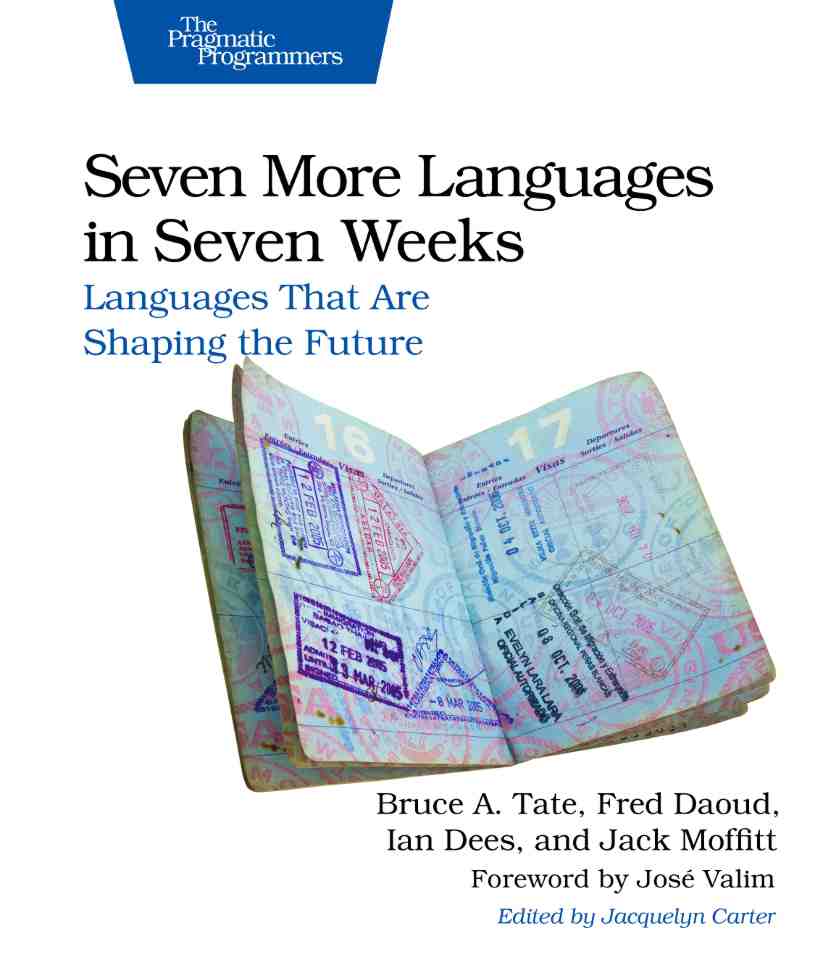Seven More Languages in Seven Weeks
19 Seven More Languages in Seven Weeks articles in total, showing 1 to 10
-
Seven More Languages: miniKanren day two

Day two of MiniKanren starts by covering matching with matche which is a macro that allows you to do common matching operations with less boilerplate.But of course once you start down that route you are going to want to be able to lose the boilerplate from your whole function definition. That̵ …
- Published:
-
Seven More Languages: miniKanren day one

My last brush with logic programming was when I was working through the original Seven Languages in Seven Weeks back in 2011 and learning a little bit of Prolog. That was an eye opening experience — letting the computer do the work just didn’t feel like any coding I had done before.The …
- Published:
-
Seven More Languages: Julia day three

The final day of Julia is a lot more challenging than the first 2 — consisting of a larger example of some image processing and a little bit about macros along with some wrap up material and some challenging exercises.Throughout the whole thing Julia struck me as a very usable language. Intu …
- Published:
-
Seven More Languages: Julia day two

Day 2 of Julia takes a wander through control flow, types, concurrency and multiple dispatch. Multiple dispatch is something I have not played with much before, and it seems very useful indeed. It works like overridden methods in OOP. But rather than picking which function to call based on just the …
- Published:
-
Seven More Languages: Julia Day One

Today, I began working on learning a little bit of Julia. On the Julia website, the language is described as an high-level, high-performance dynamic programming language for technical computing, with syntax that is familiar to users of other technical computing environments. Which sounds pretty nice …
- Published:
-
Seven More Languages: Elixir Day Three (back on the wagon)

Oh dear. After telling myself I wouldn’t I somehow managed to lunch out my Seven Languages in Seven Weeks oddyssey for 6 months. I had been most of the way through the Elixir section and then got distracted by a shiny object or something.Well, today I am back on the wagon and the way I am go …
- Published:
-
Seven More Languages: Elixir Day Two

Today’s installment was long and occasionaly annoying. Mostly because I felt that what I wanted to say in Elixir was on the tip of my tongue. I just didn’t quite yet have the language to say it. An occupational hazard when picking up new languages. We first looked at soome of the Elixi …
- Published:
-
Seven More Languages: Elixir Day One

Elixir has been getting a lot of interest recently. It's a functional, concurrent language that compiles to bytecode for the Erlang VM. As well as concurrency, it has strong support for metaprogramming with hygenic macros — think Scheme but without all the parentheses. The syntax is really p …
- Published:
-
Seven More Languages: Elm Day Three

My final day with Elm, at least for now started out a bit challenging. As before, the examples in the book are for elm version 0.13 not 0.14 and there has been enough change that porting the example program across was annoying. But after that, the whole thing became a lot more fun. You see, d …
- Published:
-
Seven More Languages: Elm Day Two

As it turns out quite a lot has changed in Elm between the release in the book and the current 0.14 version. Which made things more challenging than perhaps I may have liked. Still, it has been a good way of getting to know the documentation. Virtue of necessity and all that.You can find a port of …
- Published:
